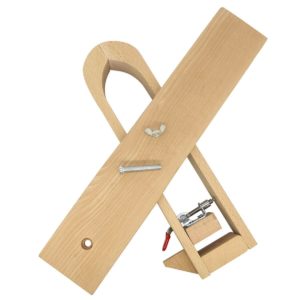
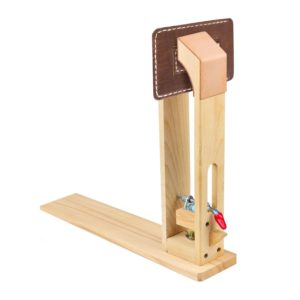
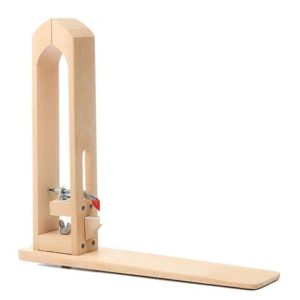
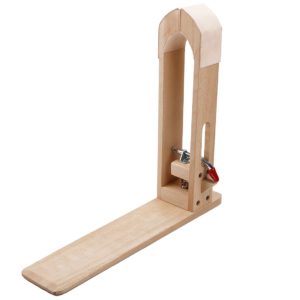
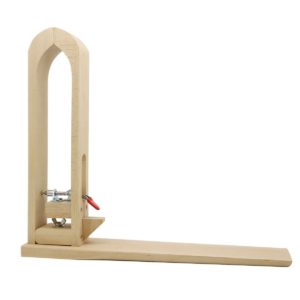
A stitching pony, also known as a sewing pony, is a wooden instrument with two arms. Commonly it is used to protect leather pieces when they are being hand-sewn. Leather is a rugged, dense fiber. When you have two hands unoccupied, feeding a needle and dragging the thread across will be a lot smoother. These tools are like a stitching horse, but far smaller.
What does a sewing pony do?
The sewing pony is usually mounted on a chair. The weight of the individual seating on it keeps it in place, as do two vertical arms that stretch up to support the leather. They’re connected in the center by an adjustment screw, allowing you to change the distance between them. The sewn leather is inserted between the thighs, and the arms are tightened to keep the leather object in place.
It’s crucial to make sure that any substance that comes into contact with leather during the leather-sewing process is soft and won’t leave any unsightly imprints or markings. The pony has a soft surface for grasping leather since it is constructed of smoothed wood. If desired, a soft material such as a fabric or another type of leather may be inserted between the pony arms and the leather being employed, offering additional scratch protection.
A stitching pony may be a useful leatherworking instrument for crafters who often hand-sew. Below you will find an expert review of top 5 leather sewing ponies you may use while crafting your leather projects. Check the buying guide and comparison table to choose the most suitable sewing/stitching pony for your DIY projects.
YESURPRISE Leather Pony – the best for quick stitching!
 When you want to thread, the Yesurprise pony clamp will hold the leather securely in place, making leatherwork easier and less tiring. You will cover your hand while still increasing your performance. The pony will easily clamp and unclamp.
When you want to thread, the Yesurprise pony clamp will hold the leather securely in place, making leatherwork easier and less tiring. You will cover your hand while still increasing your performance. The pony will easily clamp and unclamp.
It’s also very mobile and rotates from all angles, so you may change the angle easily. It is easy to install the pony for left- or right-handed people.
Belts, wallets, pockets, purses, lined and finished leather garments will all benefit from simple stitching with this tool.
The thickness range may be used for the screw and can move the tightness up and down.
Pros
- Designed for quick stitching;
- Good price point;
- Good customer support;
- Non-toxic;
- Good for lacing and sewing;
Cons
- May lack screws;
- Average build quality;
- Can scuff too thick leather;
When the consumer deals with the leather, the Yesurprise tool firmly holds it. When in operation, the vise portion may be placed to rest on the long base section to keep the pony still. Assembling it requires less than a minute.
SIMPZIA Leather Stitching Pony – the best for durability!
 The SIMPZIA pony is handcrafted with accuracy and toughness from superior beech and steel. The pony clamp can stand firmly on the table and can be modified to any angle with ease.
The SIMPZIA pony is handcrafted with accuracy and toughness from superior beech and steel. The pony clamp can stand firmly on the table and can be modified to any angle with ease.
This sewing pony’s overall scale makes it ideal for sewing both tiny and big leather pieces such as shoes, purses, pocketbooks, belts, and so on.
The great thing about this fantastic tool is that it would never scuff, scrape, or ruin your leather while providing the best grip for your leather DIY project.
Another fantastic feature of this sewing pony is that it comes with a simple instruction sheet, wax thread, two extra needles, and an optional change screw in a case you lose the one that came with it.
Pros
- Sturdy;
- Budget-friendly;
- A nicely tapered jaw for quick access;
- Good leather wrap;
- The best for polyester threads;
- Made of solid crude wood;
- Easy to assemble and disassemble;
- Can be clamped to a worktable;
- Replacement parts are included;
Cons
- No adjustable pressure (won’t hold too tight);
- No rotation vice;
- The lug nut screws have big holes;
This pony tool can easily become your good business investment for your leather sewing and more. Besides leather, it may cope with canvas, cloth, paper. It is good for sewing belts, bags, wallets, purses, pocketbooks, wrapped and polished pieces.
Erlsig 360° Rotation Desktop Sewing Pony – the best for beginners!
 This Erslig sewing pony keeps the leather firmly in place, and the vise portion should be mounted such that you can lean on the long base section to keep the pony stable when in operation. Get the work a whole lot smoother and quicker. That is why it can be a good choice for beginners.
This Erslig sewing pony keeps the leather firmly in place, and the vise portion should be mounted such that you can lean on the long base section to keep the pony stable when in operation. Get the work a whole lot smoother and quicker. That is why it can be a good choice for beginners.
The pony instrument can be tailored to any angle to fit your needs, making it extremely versatile. If you are right or left-handed, the leather method would perfectly fit your needs. Rotary smooth screws should not rust easily. The stainless steel stretch bar may be modified to suit any clamping requirement.
Make your smartphone case, belt, wallet, purse, wrapped objects, brushed, upper oil leather pieces with this clamp.
Pros
- Easy to install and use;
- One-year warranty;
- Simple design;
- Rust-resistant screws;
- Adjustable at any angle;
Cons
- No leather padding on the grip;
- A bit flimsy;
Everything you have to do with this clamp is to place some leather pieces on the jaws and you’re ready to go. This is a rather cost-effective method. It works flawlessly and is very convenient.
Tosnail Wood Leather Stitching Pony – the best for adjustability!
 Because of its consistency, basic style, and ease of use, the Tosnail hand sewing pony may be a good choice. The Tosnail pony is constructed of high-quality beech wood and has a stainless steel stretch bar that can be adjusted.
Because of its consistency, basic style, and ease of use, the Tosnail hand sewing pony may be a good choice. The Tosnail pony is constructed of high-quality beech wood and has a stainless steel stretch bar that can be adjusted.
Its jaws are coated in authentic leather to have a natural grasp on your leatherwork ventures without scratching or scuffing them. It also has a 360-degree rotation vice, which helps you to stand this pony in a variety of diverse but extremely comfortable angles.
But if you’re right-handed or left-handed, you’ll be able to use this method with ease and comfort.
Thanks to this lightweight instrument, you’ll be able to stitch wallets, shoes, purses, ties, and other items with ease and comfort.
Pros
- Deformation resistance;
- Solid build;
- Different adjustment angles;
- A tapered jaw with flat grip action;
- A quick release;
- Budget-friendly;
- One-screw setup;
Cons
- A bit challenging to grip thin leather pieces;
- Screws may fall off;
This pony clamp also offers the highest price-to-quality ratio. The clamp is solid enough to keep your project in place without leaving a trace on the leather surface.
Stormshopping DIY Wood Leather Stitching Pony – the best for leather lacing!
 One of the best devices for making even and beautiful leather lacing stitches. Made of sturdy metal and wood, this pony tool has an adjustable screw to set up the tightness degree.
One of the best devices for making even and beautiful leather lacing stitches. Made of sturdy metal and wood, this pony tool has an adjustable screw to set up the tightness degree.
Like all previous models, it has a 360-degree rotation design but each angle can be adjusted as you need. Left- or right-handed people can use the tool.
The pony will assist you in repairing your leather at any time with high quality, making your hands clean.
Uses of this tool include: Belts, pockets, purses, and pocketbooks with leather lacing and stitching. It can also handle brushed, wrapped, and upper oil leathers.
Pros
- Wide application;
- The best tool for DIY leather lacing
- Simple design;
- Adjustable;
- The base is quite durable;
- Portable;
Cons
- Not for beginners;
- The flimsy clamping mechanism;
- The handle is not sturdy;
The Stormshopping wood pony can be used for leather lacing, sewing, or some other tasks that require the use of the “third” hand.
The Buyer’s Guide
Size
There are both large and small sewing ponies. A large stitching pony is all you need for your art whether you’re going to or would always operate on both tiny and larger projects including belts, purses, saddles, briefcases, and so on.
If you want a bigger pony, you would be able to stitch both large and tiny projects with ease. They frequently have a deep mouth, which helps them to accommodate bigger works.
If you do many tiny leatherwork projects including wallets, billfolds, bookcases, and ties, or you just want a sewing pony that’s super compact and simple to handle, a standard size leather stitching pony may be all you need.
Typically, the bigger stitching ponies would have greater depths, widths, and enough space for nearly every kind of big or small DIY project to fit in comfortably.
The bigger stitching ponies have a stronger handle, which helps to hold the leather object being sewn in place. The smaller models, on the other hand, would be very compact and simple to use.
Mount style:
- Pony mount. Place yourself on the tool or put yourself as if you were riding a pony (as the title implies). Sliding it in between the thighs is how you do it;
- Clamp mount. You’ll be able to mount other stitching ponies on your worktable and use them. You’ll be able to fold it across the edge of the worktable while it’s not in service, and then retract it when you need it. So, if you think you’ll have enough room on your workbench for a designated place for the pony, go for the clamp-on stitching pony;
Jaw
The pony’s jaw tightly grasps the leather object being stitched in place.
It’s normally bound, sealed, or lined with a cloth that won’t abrade or damage the surface of the leather object you’re stitching (leather about 8 inches thick, fabric, or rubber).
The all-flat jaw, the small jaw, and the broad jaw are the three most popular forms of jaws. Although both of these varieties of jaws are useful, you’ll want one with a tapered or narrowed jaw.
Your hands would be able to move closer to the DIY project you’re stitching thanks to the tapered jaw.
Handle
The sewing pony you select should have a stronger grasp on its handle.
Normally, you will mount and dismount your stitching pony when required, and the handle on your pony would make this routine a lot easier.
For a strong grasp, the handle should be broad and thick enough.
Adjustability
Another feature to consider when purchasing a sewing pony is how adjustable it is.
You should be able to move your stitching pony in any direction you like the swing motion to be in, like diagonally, vertically, towards you, away from you, and any other direction you like it to be in.
Working on a DIY project can get much easier, more relaxed, and mobile as a result of this.
Rotating vice
Although certain leather stitching ponies have a static vice, some have a 360-degree rotating vice.
The rotating vice is a feature of the pony that enables you to freely rotate the whole head of the pony to accommodate additional modifications and usage.
This operation is desirable for your stitching pony as it increases the tool’s stability and makes stitching and lacing even simpler.
Video Tutorial: Making the Stitching Ponies
Final thoughts
The sewing pony stands for a leatherworking stitching instrument that allows you to stitch leather without using your hands. It makes hand stitching much easier and more effective. Hopefully, the reviews of some best leather sewing ponies were helpful enough for you. Look for affordable and reliable tools made of durable material.


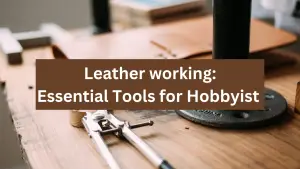

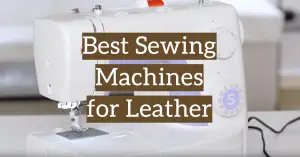
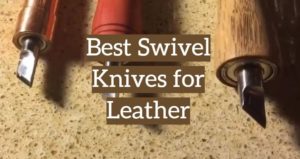
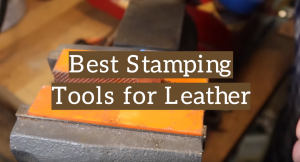
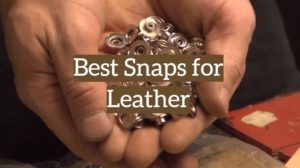
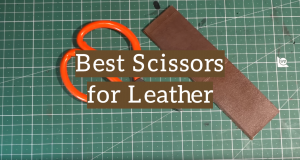
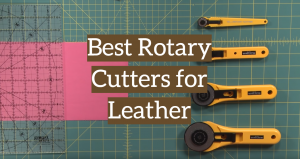
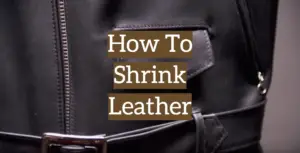
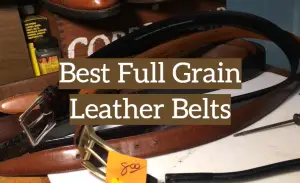
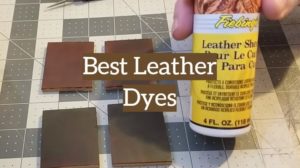
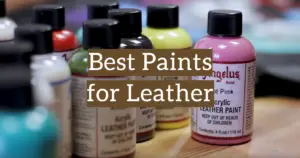


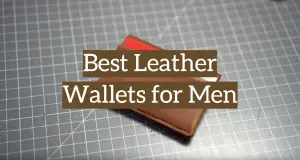


I’ve had a SIMPZIA but it broke down a few days ago so I’m now looking for a new leather sewing ponie. From what I can tell, people seem to like Yesurprise a lot. Might as well give it a go. If it’s as good as my SIMPZIA, I’m happy.